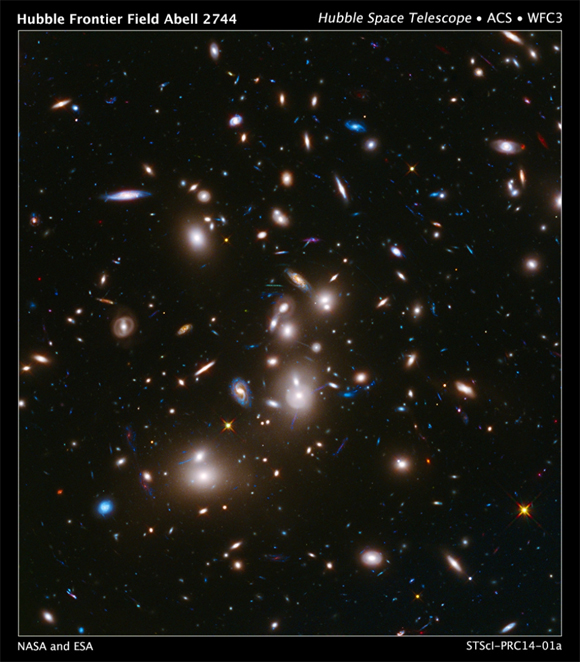Hubble Space Telescope Provides New Perspective
By Space Coast Daily // January 9, 2014
finds deepest cluster of galaxies ever found

NASA.gov — NASA’s Hubble Space Telescope is providing a new perspective on the remote universe, including new views of young and distant galaxies bursting with stars and scientists described the findings Tuesday in a news conference sponsored by the American Astronomical Society (AAS).

The immense gravity in Abell 2744 is being used as a lens to warp space and brighten and magnify images of more distant background galaxies. The more distant galaxies appear as they did longer than 12 billion years ago, not long after the big bang.
The Hubble exposure reveals almost 3,000 of these background galaxies interleaved with images of hundreds of foreground galaxies in the cluster. Their images not only appear brighter, but also smeared, stretched and duplicated across the field. Because of the gravitational lensing phenomenon, the background galaxies are magnified to appear as much as 10 to 20 times larger than they would normally appear. Furthermore, the faintest of these highly magnified objects is 10 to 20 times fainter than any galaxy observed previously. Without the boost from gravitational lensing, the many background galaxies would be invisible.
THE HUBBLE EXPOSURE TO BE COMBINED WITH OTHER IMAGES
The Hubble exposure will be combined with images from Spitzer and NASA’s Chandra X-ray Observatory to provide new insight into the origin and evolution of galaxies and their accompanying black holes.












